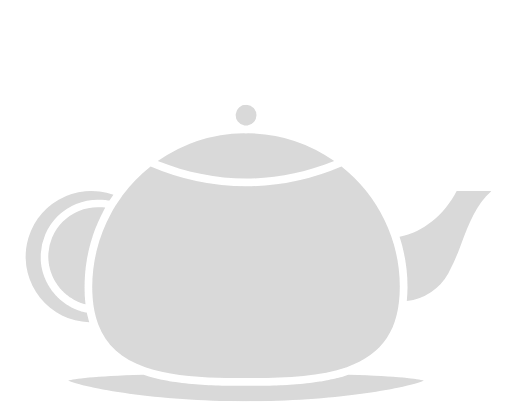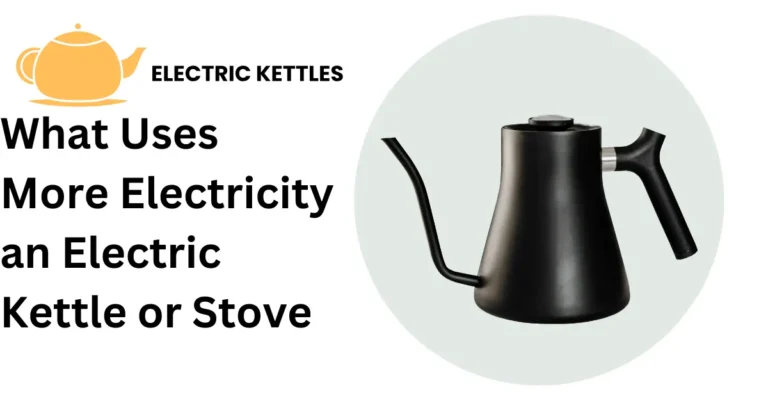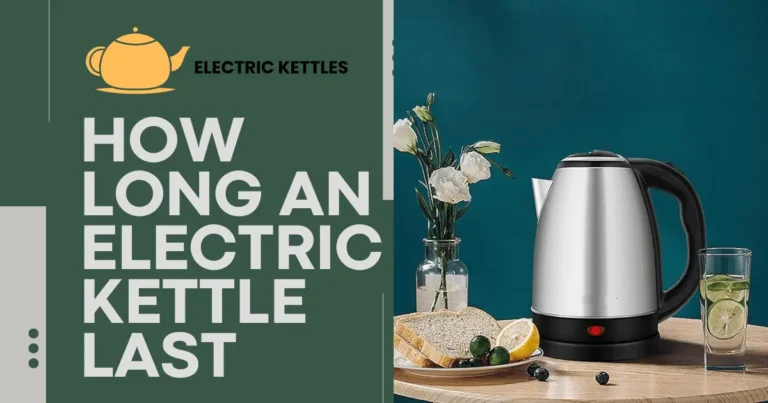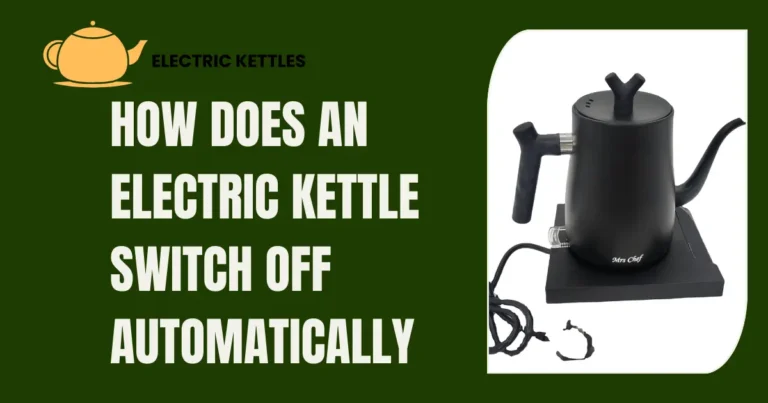What Causes a Tea Kettle to Whistle
A tea kettle is a simple kitchen tool used to boil water. It has been around for many years and is popular for making tea, coffee, and other hot drinks. Most kettles are made of metal or glass, and they heat water quickly on the stove.
One of the special features of a tea kettle is the whistle. This sound happens when the water inside reaches a boiling point. Steam builds up and escapes through a small spout, creating a high-pitched noise. The whistle is useful because it lets you know when the water is ready without watching it.
Table of Contents
How a Tea Kettle Works
A tea kettle works by heating water until it reaches a boiling point. When the kettle is placed on the stove, or if it’s an electric kettle, the heat transfers to the water inside. As the water temperature rises, it starts to change from a liquid into steam. Water boils at 100°C (212°F), and once it reaches this point, it produces a lot of steam.
In a whistling tea kettle, this steam is pushed through a narrow spout that has a whistle attached to it. The design of the spout forces the steam to pass through a small opening. As the steam escapes, it creates vibrations in the air, which produce the whistling sound. The higher the pressure of the steam, the louder the whistle becomes.
This whistle serves as a signal that the water has reached the boiling point. It’s a helpful feature because you don’t have to constantly monitor the kettle. The sound alerts you that the water is ready, making it both convenient and efficient for boiling water for tea, coffee, or other hot drinks.
Mechanism Behind the Whistling Sound
1. Formation of Steam and Pressure
When the water in the kettle heats up and reaches its boiling point, it begins to turn into steam. More steam is produced as the water continues to boil, building pressure inside the kettle. This pressure forces the steam to escape through the spout, which is often designed with a whistle cap. The growing steam pressure is key to the mechanism behind the whistle.
2. Narrow Spout Design
The spout of a whistling kettle is designed to be narrow, with a small opening. As steam passes through this small space, it speeds up, much like how air flows faster through a narrow tunnel. The size of the spout’s opening is crucial because it controls how much steam escapes at once and at what speed. This fast-moving steam is the foundation of the whistling sound.
3. Creation of Vibrations
As the steam exits through the narrow spout, it causes air vibrations. These vibrations create sound waves, which are what we hear as a whistle. The design of the spout helps amplify these vibrations, making the sound louder and sharper. The speed of the steam and the size of the opening both influence the pitch and intensity of the sound.
4. Whistle as a Signal
The whistling sound is not just a random occurrence; it serves as a signal that the water inside the kettle has reached its boiling point. The louder the whistle, the higher the steam pressure, and this alerts you that the water is ready for use. This simple, yet effective mechanism makes it easy to know when to take the kettle off the heat.
Factors That Influence the Whistle
Water Temperature
The temperature of the water inside the kettle is a key factor that influences the whistle. Water boils at 100°C (212°F), and once it reaches this temperature, steam production begins. If the water is not hot enough, it won’t create the necessary steam pressure to produce a whistle. Therefore, the initial temperature of the water can affect how quickly and effectively the kettle whistles.
Kettle Design and Material
The design and material of the kettle also play important roles. Kettles made from different materials, such as stainless steel or glass, may conduct heat differently, impacting how quickly they reach boiling point. Additionally, the shape of the kettle and the design of the spout can affect the flow of steam. A well-designed spout allows steam to escape efficiently, resulting in a clearer and louder whistle.
Steam Pressure
The pressure of the steam inside the kettle directly influences the intensity of the whistle. Higher steam pressure leads to a louder, sharper sound, while lower pressure may result in a quieter whistle or no sound at all. Factors such as how full the kettle is and how tightly the lid fits can affect steam pressure. A full kettle generates more steam, while a loosely fitting lid may allow steam to escape without producing a whistle.
External Environment
The surrounding environment can also impact the whistling sound. For example, high altitude can lower the boiling point of water, making it more challenging for the kettle to produce steam at the same pressure as at sea level. Additionally, the ambient noise level in the kitchen can affect how easily you hear the whistle. In a quiet room, even a soft whistle can be noticeable, while in a noisy environment, a loud whistle may go unheard.
The Physics of Sound in Tea Kettles
Sound Wave Formation
The physics of sound in tea kettles begins with the formation of sound waves. When steam escapes through the narrow spout, it creates vibrations in the surrounding air. These vibrations occur as the fast-moving steam pushes against air molecules, causing them to oscillate. This oscillation generates sound waves that travel through the air, producing the whistling sound we hear.
Frequency and Pitch
The frequency of these sound waves determines the pitch of the whistle. Higher frequency sound waves produce higher pitches, while lower frequency waves result in lower pitches. In a tea kettle, the size of the spout opening and the speed of the steam play significant roles in setting the frequency. A narrower spout typically creates a higher pitch, while a wider opening can produce a deeper sound.
Amplitude and Volume
The amplitude of sound waves refers to their strength or intensity. A larger amplitude means a louder sound, while a smaller amplitude results in a softer sound. In the case of a kettle, the steam pressure affects the amplitude of the sound waves. When steam pressure is high, the sound waves have greater amplitude, making the whistle louder. Conversely, if steam pressure is low, the whistle may be quieter or even inaudible.
Resonance and Amplification
Resonance is another important concept in the physics of sound in tea kettles. The kettle itself can act as a resonating chamber, amplifying the sound produced by the escaping steam. The design and shape of the kettle can enhance the resonance effect, making the whistle more pronounced. This amplification occurs as the sound waves reflect within the kettle, reinforcing the vibrations and resulting in a clearer, louder whistle.
FAQs
Q. Do all tea kettles whistle?
Not all tea kettles whistle. Some designs do not have a whistle mechanism. Check the product description before buying.
Q. Can I prevent my kettle from whistling?
You can reduce the whistling by partially covering the spout or using a kettle without a whistle. However, this may not be safe.
Q. Why does my kettle whistle loudly?
A loud whistle usually means high steam pressure. It can also happen if the kettle is very full or the spout is narrow.
Q. Is the whistling sound harmful?
The whistling sound is not harmful. It is simply a signal that your water is boiling.
Q. How can I clean the whistle on my kettle?
To clean the whistle, remove any buildup around the spout. Use warm, soapy water and a soft brush to clean it. Rinse well before using.
Conclusion
The whistling sound of a tea kettle is a useful feature that signals when water is boiling. This sound is produced by steam escaping through a small opening in the spout. As steam builds up inside the kettle, it creates pressure that forces the steam out, resulting in the familiar whistle.
Several factors influence the whistle, including water temperature, kettle design, and steam pressure. A well-designed kettle will produce a clear and loud whistle, making it easy to know when your water is ready. By keeping your kettle clean and in good condition, you can ensure that it continues to function properly.







